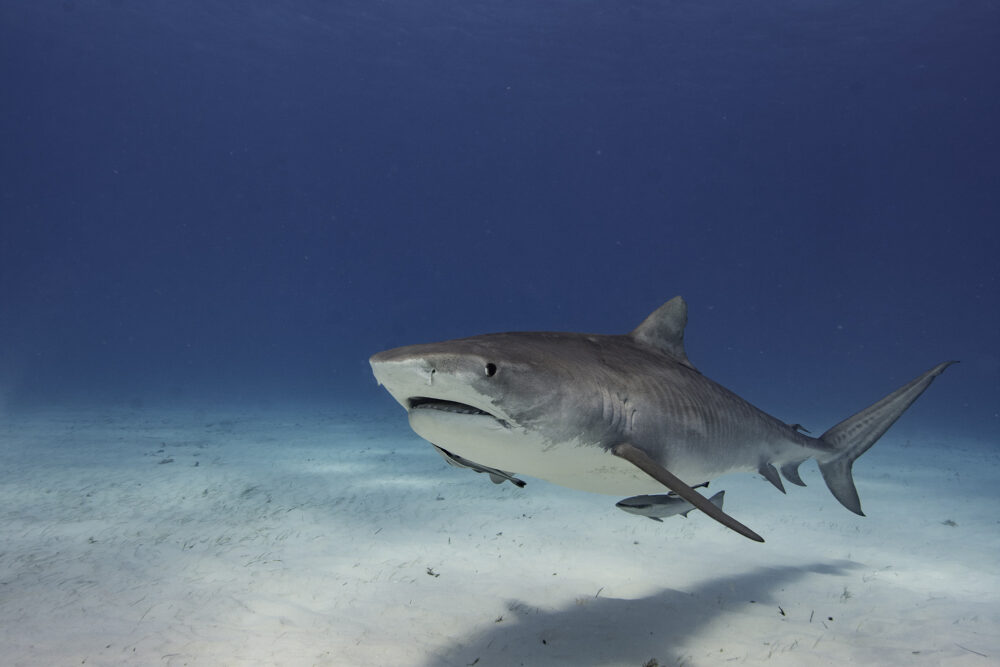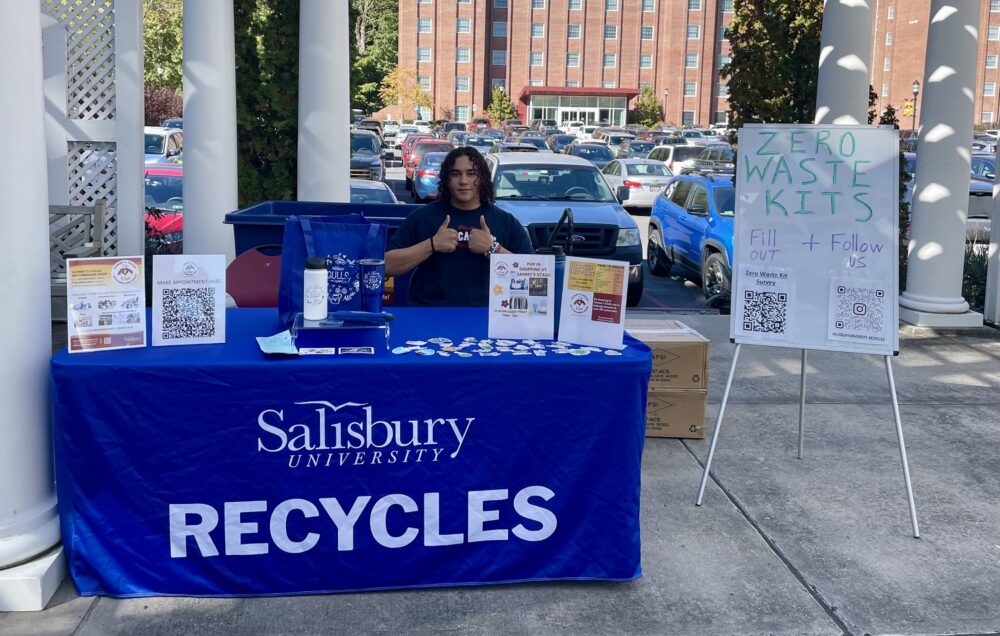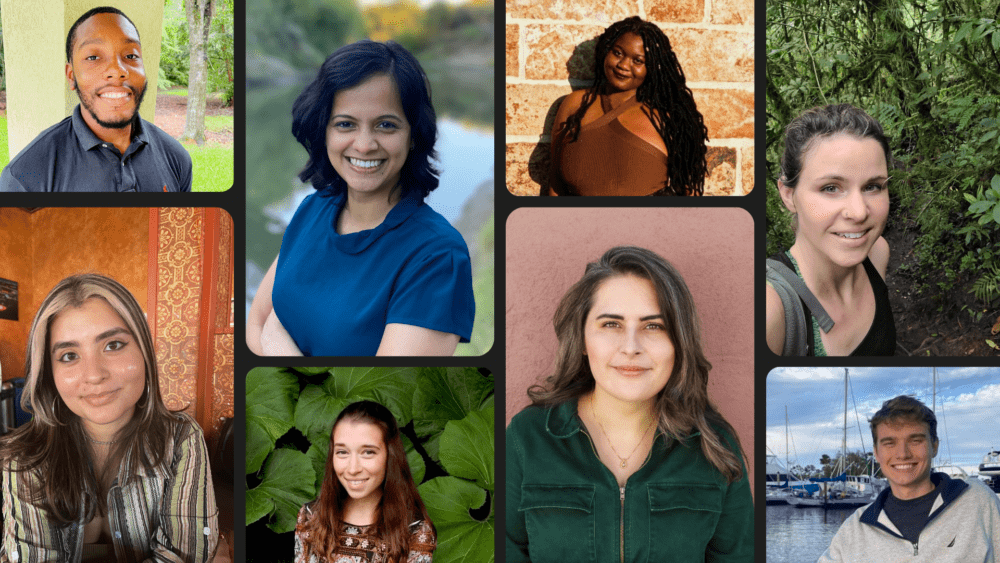We have much more to do and your continued support is needed now more than ever.
Students at PS 250 in Brooklyn Plan an Urban Schoolyard Habitat
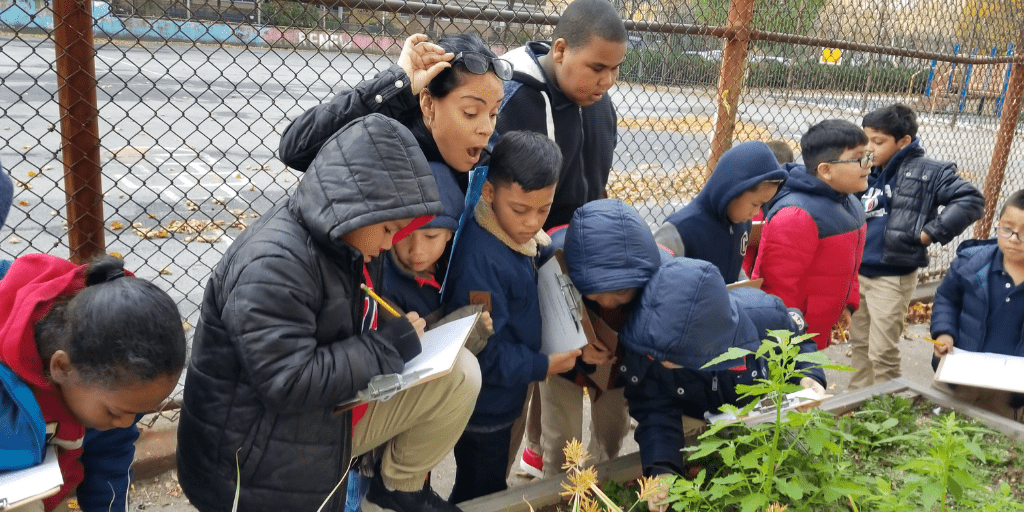
When I heard that P.S. 250 would be awarded capital funds from the Brooklyn Borough President’s office to create a state-of-the-art pollinator learning garden in our school, I was excited. As a wildlife enthusiast with a passion for studying and protecting the natural world, I jumped at the chance to work on a program that would bridge STEAM work in the classroom with practical conservation work outdoors. The National Wildlife Federation (NWF) would lead the project – NWF Brooklyn Schoolyard Habitats – in partnership with students and staff at P.S. 250, architects from Mathews Nielsen Landscape Architects (MNLA), native plant experts, and the School Construction Authority. Our initial meeting couldn’t arrive soon enough.
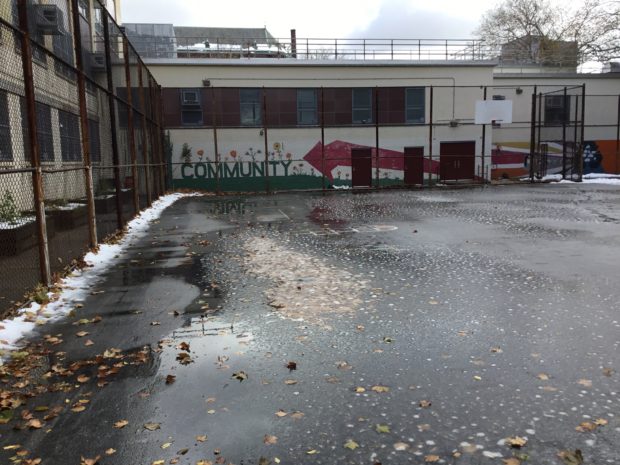
On November 16, 2018, NWF staff came to P.S. 250 explain the overall goals of the program to the students and staff: to create important habitat for both native and migratory pollinators like bees, birds, and butterflies, and to promote environmental awareness in the community about their plight. The population of Monarch butterflies has declined by 90% over the last 20 years. Over 80% of the world’s flowering plants require pollinators to reproduce and one third of all agricultural productivity depends on pollinators. If bees and other pollinators decline, so will our agricultural output. The goal of NWF’s Schoolyard Habitats program is to educate students and school communities about how they can make a positive impact for wildlife by creating habitats for Monarch butterflies and other pollinators In their schoolyards and neighborhoods.
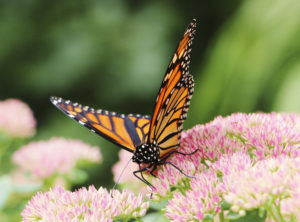
At the end of our initial meeting with NWF staff in November, we were tasked with creating a vision statement for P.S. 250’s Schoolyard Habitat: “Together, we will create a wildlife habitat with the purpose of attracting native species back to our school community and provide our students with firsthand knowledge and experiences of the natural world, thereby fostering their innate curiosity in an outdoor classroom environment.”
NWF’s Schoolyard Habitats program complements our STEAM (Science, Technology, Engineering, Art, and Mathematics) program and aligns with the NYC Department of Education’s new Amplify Science curriculum – a phenomena-based K-8 curriculum that emphasizes three-dimensional learning and real-world problem-solving. This makes it a great fit for our school.
For example, in kindergarten, students are pondering the question, “Why are there no monarch caterpillars in Mariposa Grove [in Yosemite National Park]?” Students are expected to identify the cause of the problem and find a solution. They observe photos, videos, conduct research, and eventually are able to infer that caterpillars are not in the Grove because there are no milkweed plants – their main food source. They conclude that animals choose habitats that include their food source and consequently, they can help monarchs by planting milkweed!
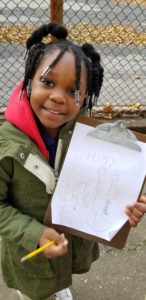
It was after our initial meeting with NWF that our PS 250 Schoolyard Habitats Team of teachers and students gathered to conduct a basic site inventory in our proposed garden space. We needed to determine what was currently living in the garden, to envision what kind of wildlife we wanted to attract in the new habitat garden, what kind of plants we needed to plant to attract that wildlife, and to think about what elements we wanted for our outdoor classroom. The National Wildlife Federation provided worksheets to guide the process. Two classes – first and fourth grade – were initially chosen by our principal, Ms. Lacioppa. A fourth grade class mentored and guided the first grade class. It was wonderful to see our young environmentalists walk around with clipboards, gathering information about what they were observing.
I wanted our STEAM classes, and more of our students, to participate in the site inventory and visioning process. I decided to partner with my fellow STEAM teacher, Mauricio Ortega, and involve two separate grades in creating 3-D models of our Schoolyard Habitat. It made perfect sense for students to use the Engineering Design Process to design their Schoolyard Habitat. Mr. Ortega targeted fourth grade and I chose second grade.
First, students conducted observations of the schoolyard site, recorded their observations, and noted the feelings it evoked. They defined the problem as, “We don’t have a garden,” and, “We don’t have wildlife.” When I asked how we can solve this problem, students responded, “We need to build a garden. This will attract animals back to our school yard.”
I asked the students to identify the problem or need, think about possible solutions, plan and draw their vision, and determine the materials they needed. Mr. Ortega had the students create their habitat through the perspective of a pollinator. The culminating project was the creation of a 3D model of our pollinator garden with outdoor seating and various plants and animals; students also included themselves.

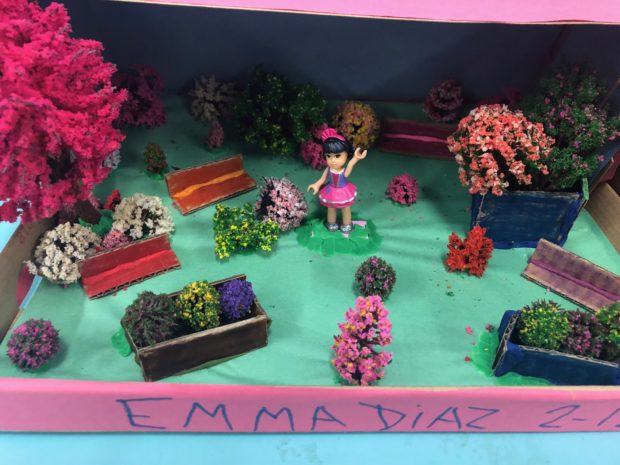
I was blown away by the beautiful projects my students created at home. Julius, a second grader from our Mandarin Dual Language program relayed, “We were [seeing that] there were hardly any plants or insects in our school yard. The insects are in other areas, like parks, because there are a lot more plants there. We need more plants so more bugs can come. We can start planting more plants – roses, blue flowers. We are creating a garden. I would like students to sit by the garden. They can record observations.”
Emma, a second grader from the Mandarin Dual Language program added, “I did benches so we can study different kinds of trees. I made different colorful trees. We had no wildlife. I wanted to show how we can make a place where we can study wildlife. We drew pictures of how we wanted our schoolyard to be and then I made the model at home.”
On November 27th, 2018, we had a visioning session with NWF staff, P.S. 250 staff, eight second and fourth grade students, and Martha Desbiens and Ilana Cohen – architects from MNLA.
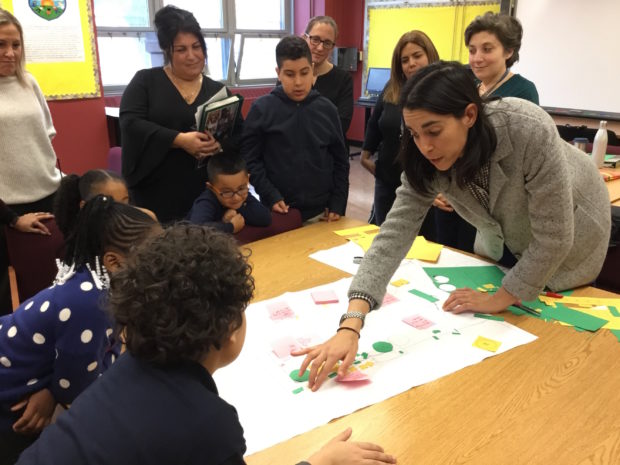
It was great to see students take a lead role in the vision and planning of our Schoolyard Habitat. Martha and Ilana explained the design process to the students, then divided them into two groups at two different tables. They rolled out two large architectural drawings of the proposed garden space that they had measured during a prior visit; then they placed cut-outs of planters, benches, trees, plants and other elements on the table, colored markers and pencils, and listened intently as students described what they wanted to see in their garden: trees, flowers, seats to observe nature, and produce to incorporate in school lunches. As they talked with the architects and their teachers, students arranged the cut-out pieces on the large drawings. Martha and Ilana took photographs of the finished designs.
Molly Bourne, Principal architect at MNLA said “MNLA is thrilled to be a part of this exciting pilot project to expand schoolyard habitat gardens throughout Brooklyn. Our hope is to teach students that each of these school’s pollinator gardens is one point in a vital larger network. It is inspiring to see a new generation connect the dots of that network themselves.“

This has been a great experience for all involved so far. We can’t wait to unveil our new NWF Schoolyard Habitat in the fall. Our students will be providing food, water and shelter for bees, birds and butterflies that need it. By creating habitat for pollinators, our students will be solving an important real-world problem and, in the process, they will become the new stewards of wildlife in Brooklyn and beyond.
Learn more about Schoolyard Habitats
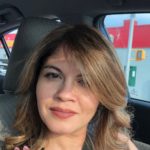 Christine Rivera teaches STEAM at PS 250, an elementary school in Brooklyn, New York. She graduated from Hunter College with a double major in Elementary Education and Psychology and a Master of Science in Education from the science and environmental education program at Brooklyn College.
Christine Rivera teaches STEAM at PS 250, an elementary school in Brooklyn, New York. She graduated from Hunter College with a double major in Elementary Education and Psychology and a Master of Science in Education from the science and environmental education program at Brooklyn College.
















